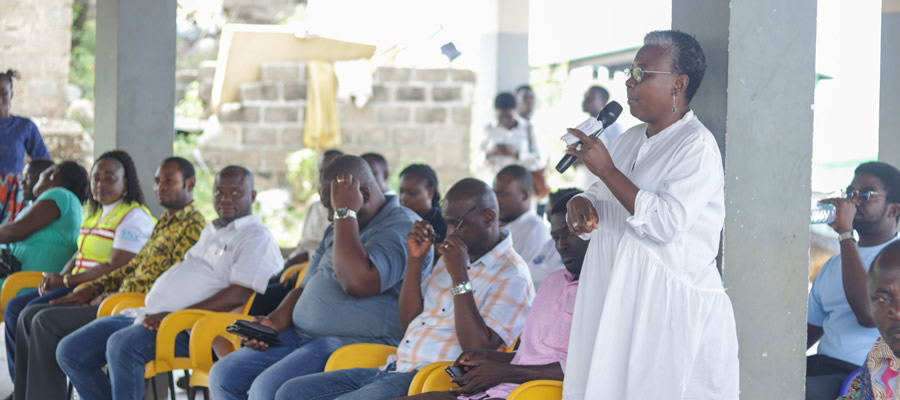

Introduction
Persons with disabilities (PWD) have been defined as those who are unable to or are restricted in the performance of specific tasks/activities due to loss of function of some part of the body as a result of impairment or malformation (Ghana Statistical Service, 2012).
In an attempt to understand the situation of PWDs as a guide for policy formulation, the Ghana Statistical Service, for the first time, collected information on PWDs in the 2010 Population and Housing Census. This chapter discusses the socio-economic and demographic characteristics of PWDs in the Ahanta West District.
Opulation with Disability
The proportion of the population with disability in the district is 2.9 percent as shown in Table 6.1. Of the male population, the proportion disabled in the district is 2.7 and of the female population, 3.0 percent are disabled.
Type of Disability and Sex
Figure 6.1 show the population by type of disability and sex in the district. From the graph, those with sight disability constitute the highest proportion of disabled persons with 42.7 percent. This is followed by those with physical disability (34.1%), hearing (12.9%) and speech 12.0 percent with persons with emotional disability having the lowest proportion of 8.8 percent.
Slight differences between males and females with disability are shown in the graph. There are more females (45.5%) with visual or sight impairment than males (39.4%). Again, 13.6 percent of females have disability with hearing while it is 12.1 percent for their male counterparts.
Distribution of PWD by Type of Locality
Table 6.1 shows that there are more persons with disability in the rural communities (3.3%) compared to the urban areas (1.9%). The table also shows that visual or sight impairment is the most common type of disability in both urban (45.1%) and rural areas (42.1%). This is followed by people with physical disability with urban areas recording 31.9 percent and the rural areas with 34.7 percent. There are more physical (34.7%) and emotional (9.0%) persons with disability in the rural areas compared to (31.9%) and (7.9%) in the urban areas.
Economic Activity Status of PWDs 15 Years and Older
Table 6.2 shows that of persons with disability in the district, 49.3 percent are employed, 3.9 percent unemployed and 46.8 percent are economically not active. The data shows that for sight (52.2%) and other forms of disability not specified (57.3%), the percentage employed is higher compared to the other forms of disability specified in Table 6.2. For all the disability types reported in the table, those unemployed constitute less than 10.0 percent.
Table 6.2 further illustrate that there is varying differences in the data relating to males and females. For the male population disabled, 53.8 percent are employed, 3.8 percent unemployed and 42.4 percent economically not active. Of the various categories of disability, sight, hearing, speech and other forms of disability not elsewhere classified has more than fifty percent of their population employed, while physical, intellect and emotional has more than fifty percent of their population in the economically not active group. For the female population disabled, 45.7 percent are employed, 4.0 unemployed and 50.3 percent economically not active. Of the various disability categories, apart from other forms of disability not classified which has 53.1 percent and sight (49.3%) of its population employed, all other categories has higher percentages in the economically not active group.
Disability and Education
Table 6.3 presents data on population 3 years and older by sex, disability type and level of education in the district. Of the population disabled, 47.8 percent have never been to school. Those in pre-primary constitute only 3.2 percent with 42.3 percent in basic school. From the table people with disability who have attended secondary or higher levels of education constitute 6.6 percent. From the table, over forty percent of disabled persons have either never attended school or are in basic school. For the male and female distribution, more females (63.0%) have never attended school compared to their male counterpart where only 30.0 percent have never attended school. On the other hand, there are more males (56.5%) in basic school compared to females (30.3%) who have basic education. From the table, it could be said that more disabled males are in school compared to their female counterparts.
Date Created : 11/16/2017 6:44:38 AM









 facebook
facebook
 twitter
twitter
 Youtube
Youtube
 +233 593 831 280
+233 593 831 280 0800 430 430
0800 430 430 GPS: GE-231-4383
GPS: GE-231-4383 info@ghanadistricts.com
info@ghanadistricts.com Box GP1044, Accra, Ghana
Box GP1044, Accra, Ghana